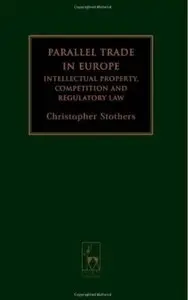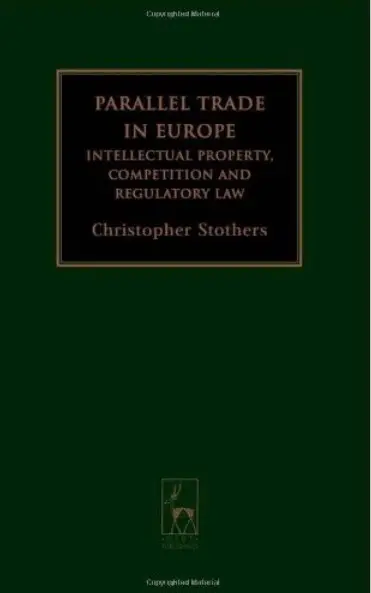Christopher Stothers - Parallel Trade in Europe: Intellectual Property, Competition and Regulatory Law
Published: 2007-04-02 | ISBN: 1841134376 | PDF | 455 pages | 3 MB
Are parallel importers the key to unlocking the single European market, breaking down long-established national barriers for the benefit of all? Or do they instead just operate in a dubious "grey market", free-loading on the investment of innovators and brand owners to the ultimate detriment of future investment? Parallel importers are in turn lionized and demonized, both in legal commentary and in the mainstream press.
Trade is economically possible whenever the price of a particular product is higher in one area than in another. However, in the real world, trade will only occur if this price differential is sufficient to cover the costs of the trader together with a sufficiently attractive margin of profit. Some costs can be viewed as barriers to trade which result in an economically imperfect allocation of resources across the world. They can also operate as a waste of resources. Various attempts have been made to reduce unnecessary barriers, encouraging trade, and reducing waste - the clearest example being the WTO, which is dedicated to eliminating barriers to trade. Regional trading areas, such as the European Community share these goals, along with certain other aims. Although many barriers have already been removed, the process is far from complete.
Parallel trade occurs when goods are manufactured by one party (the manufacturer) and put onto the market in country A but are then imported into country B by a second party (the parallel importer). The manufacturer may have manufactured the goods and/or put them on the market in country A directly or through third parties, but the distinguishing feature of parallel trade is that the manufacturer did not intend the goods to end up in country B. Parallel trade normally occurs when the manufacturer sells the goods in question in both countries (thus the trade is "parallel" to the main trade organized by the manufacturer) but the price of the goods in country A is lower than the price in country B. However, it may also occur when the manufacturer does not sell in country B at all, or does not sell sufficient quantities there. The goods are typically described in country B as "parallel imports" or "grey market goods."
Understanding how EC law operates to restrict parallel trade involves exploring a complex matrix of different rules derived from the different fields of competition, free movement, and intellectual property, together with their corresponding private and public enforcement regimes, as well as the relationship with other external regimes.
Author Christopher Stothers' comprehensive treatment of the subject successfully casts light on this difficult topic and is set to become the definitive work of reference in the area.



